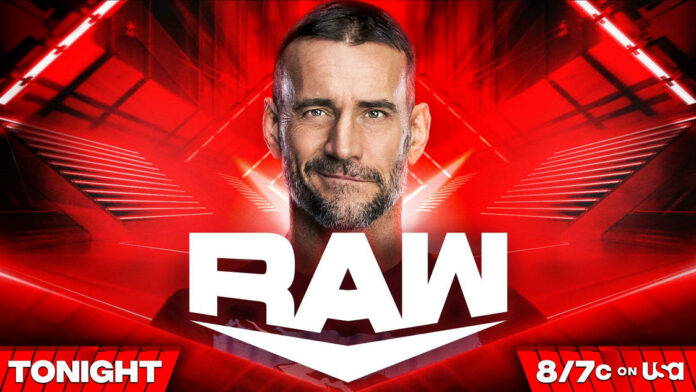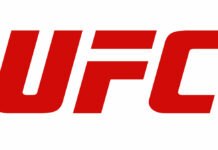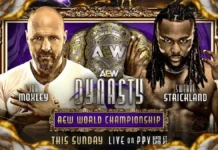
Over thirty years ago, Monday Night Raw debuted on the air as a live, almost scaled down version of the arena settings used for TV tapings since the WWF took its television out of Allentown the prior decade. Living up to its name Raw, which primarily broadcasted from The Manhattan Center in New York in those days, had a gritty look, not something typical of the “WWF shine” of the 80s. As we know, the Monday show became the flagship of the organization, battling WCW for pro wrestling superiority in the 90s before it became the massive money-maker that it is today through its rights fees contracts.
Those TV contracts are the biggest revenue stream for the newly-formed TKO corporation, which brought together WWE and the Ultimate Fighting Championship. The WWE had literally billions of dollars and record-setting revenue based on the demand for content from networks and streaming platforms. As we’ve discussed before, with the myriad of media options available today, networks and advertisers are willing to spend top dollar if a specific television show can get their products in front of the right demographic. Otherwise, the commercials that are designed to market products get lost in the shuffle of TV shows, streaming platforms, and podcasts. Again, getting their products in front of the right audience to help generate sales is a priority because of how many distribution channels there are as the media business continues to evolve. Despite the dip in the numbers from the previously mentioned Monday Night War era, pro wrestling still garners a steady and consistent audience, which is a priority for advertisers since it gives them a level of assurance that their commercials will be seen by a specific audience.
That’s why it’s not surprising that while pro wrestling isn’t nearly as main stream as it once was, it’s still a major franchise for networks that want a piece of the pie from the ad revenue generated by commercials on their channels. For example, when Mountain Dew buys ad space to sponsor a pay-per-view, they know that their new beverage will be seen by the typical male demographic.
The other side of the coin is that the climate of the television business, particularly when WWE’s last pair of TV deals were inked, Smackdown for Fox and Raw for USA respectively, is why the argument could be made that Fox overpaid for the blue brand, with an overestimation of the amount of platforms that would exist within the duration of the five-year contract. The streaming landscape began to condense, and reportedly, Fox lost money on the Smackdown deal after they paid a staggering $1.4 billion for the rights to broadcast the show. So, it wasn’t shocking when Fox opted not to renew their contract for Smackdown, and the show was announced for USA toward the end of this year.
But, where does that leave Raw?
That continues to be a topic of discussion, especially after TKO executives have mentioned that they are willing to explore all options and even consider moving Raw for its traditional Monday night time slot.
More news within the WWE landscape made headlines today as The Sports Business Journal reported that Amazon, the online retail giant, might sign the WWE show for its Prime Video platform in an effort to boost subscriptions. Originally, the Prime service was designed for its two-day free shipping option for orders placed online, but has expanded into video content because of the success other streaming platforms had. Jeff Bezos didn’t become a billionaire by leaving money on the table. Amazon proved it was willing to invest into the streaming business, as it paid a staggering $11 billion for an 11-year deal to get the rights to the Thursday Night Football brand. Clearly, the suits at Amazon headquarters are dedicated to their Prime Video project, with the expectation that the complete service of video content, shipping perks, and other features will become a household item so to speak. How successful streaming will truly become remains to be seen, mostly because the market was oversaturated and is still finding a level for how many platforms are truly sustainable on a long-term basis, but the Bezos organization has some unique advantages over other streaming services. Keep in mind, one of the pitfalls that many of the streaming organizations have experienced, including the WWE when The Network was an in-house project, is the difficulty of retaining subscribers each month. This goes back to how many options there are and thus more competition for the streaming dollar. Some viewers might cherry-pick their choices certain months depending on the content available, garnering a limited amount of revenue for the platform while the production costs involved are almost continuous for the company. Someone might subscribe to Disney+ for a month to binge watch the new season of The Mandalorian before they opt not to renew until a few months later when another new season of a specific show is released. For wrestling fans, the easiest example, at least during the heyday of the WWE network, is that they could choose to subscribe for a month to watch Wrestlemania before they cancel their subscription, only to renew when another major PPV card is announced later in the year. That dynamic could’ve reduced Wrestlemania, one of the biggest revenue streams for the company, to a $10 purchase when it was exponentially more expensive to order on traditional pay-per-view several years ago.
The ability to maintain subscribers is still an equation that many media conglomerates are trying to solve.
The advantage that Amazon has is that its streaming platform is only a part of the service that can be provided if someone has Prime. On the other hand, Disney is limited to media content within the properties that the massive corporation owns, which is vast, bu again is specifically media content. Amazon will offer the video content, the previously mentioned free shipping on products, and a slew of other perks. Taking everything into consideration with flu season, the general insanity in the world, and the fact that it’s an election year, does anyone really want to leave their house if they don’t have to? The convenience of online shopping will continue to become more and more common place within society and if Amazon can link that perk with Prime Video, it’s an added value for customers. The dynamics work well together because even if someone specifically subscribes for Prime Video, they are probably going to do most of their online shopping through Amazon because of the added perk of free shipping with the subscription.
Should Amazon make a serious run at WWE Raw?
Absolutely, for Amazon there’s really no downside, not even the major price tag that would be involved with taking one of WWE’s primary shows off of traditional television. Remember that difficult scenario involved with maintaining subscribers? If Amazon lands Raw, it will give viewers of the Prime service a weekly reason to stay subscribed to the platform. Not that Raw would accomplish this on its own, but the general philosophy of weekly content involved with Prime would be a key point for Amazon to get its Prime service established as the “household item” mentioned earlier.
That being said, I sincerely hope that Raw or any other weekly WWE program doesn’t get signed for Amazon or any other premium streaming platform. It might sound trivial, but a subscription is still a barrier to entry to generate new fans. In some ways, if you have to pay to have access to Raw then only those that are already fans of the genre will follow the product. Keep in mind, the fandom for so many people started because they stumbled across the product, but that can’t happen with a subscription model. Granted, the short-term money would be a hefty sum, but would something like this actually erode the fan base from a long-term perspective?
Furthermore, and this is almost just as important, if Raw is on Amazon Prime then the ratings are nonexistent. Amazon’s incentive is to land subscribers, but it doesn’t matter how many of them actually watch the WWE show on the platform. It would be difficult to picture a situation where many commercials are a part of the broadcast when the fans would’ve already paid for access, and even if there were, ad revenue is still primarily a part of traditional television so again, the number of subscribers, not viewers are the goal for Amazon. Without that barometer, how will management truly gauge the WWE product? Sure, Smackdown will be on USA for ratings, but it would be a rather disjointed puzzle to assemble with one of the main roster shows on cable and the other brand on a streaming service.
For TKO executives, it’s a great move because of the major amount of cash involved, or the short-end money that will boost the stock price, but it’s concerning that this could be one of those scenarios where corporate suits that don’t truly understand the unique pro wrestling business make decisions that hinder, not help the industry. Still, it’s a very interesting scenario because if a deal is signed, it would have a major impact on the presentation of the industry.
What do you think? Share your thoughts, opinions, feedback, and anything else that was raised on Twitter @PWMania and Facebook.com/PWMania.
Until next week
-Jim LaMotta
E mail [email protected] | You can follow me on Instagram, Facebook, & Threads @jimlamotta89







